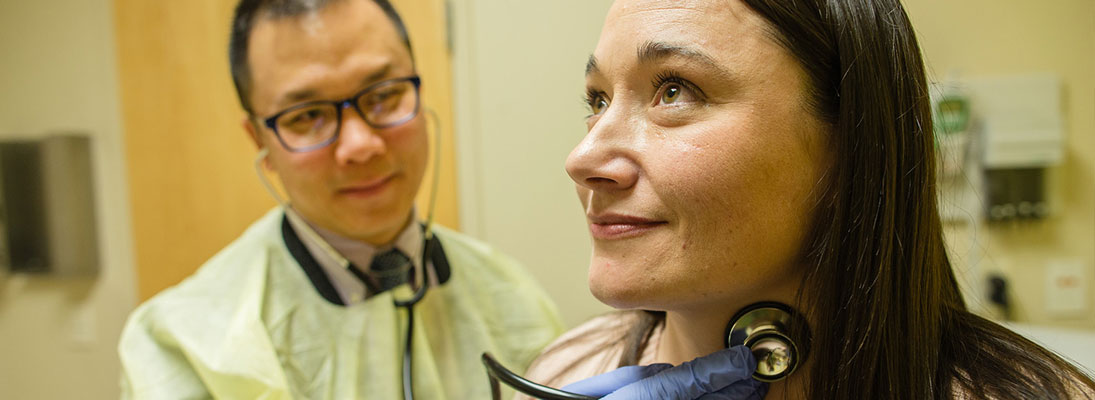
Almost 1 million total joint replacement surgeries are performed in the U.S. each year according to the American Academy of Orthopaedic Surgeons. At Community Medical Centers we use minimally invasive techniques for orthopedic surgeries whenever possible. This means surgery through the smallest possible incision with less scarring, faster healing and less risk of infection.
We perform:
Total Hip Replacement Surgery
This surgery replaces an arthritic hip joint and eliminates the damaged surfaces which are causing pain. Hip replacement surgery removes the arthritic ball of the upper thighbone (femur) and the damaged cartilage from the hip socket. The natural ball is replaced by a metal or ceramic ball that’s firmly fixed to a stem. The metal stem is inserted into the thighbone. The socket within the pelvis is replaced with a metal cup. A liner is inserted into the metal cup that’s anchored to the pelvis. The hip ball fits into this liner. Together, the ball and liner create the new joint. The surgeon collaborates with the patient to select the design of the hip replacement and size of femoral ball to give the best range of motion, renewed stability and minimize the wear process. This new hip will eliminate pain, provide more mobility and stop additional deterioration of the hip.
Total Knee Replacement Surgery
This replaces the diseased bone and cartilage with an orthopedic implant – eliminating the damaged surfaces which are causing pain. The knee joint is a hinge-type joint. It’s formed by the thighbone and the shinbone (tibia). The smooth, white tissue that covers the ends of bones where they come together to form joints (articular cartilage), covers both ends of the bone to provide a smooth cushion. The cartilage is kept slippery by fluid in joints which acts as lubrication and friction protection (synovial fluid). In front of the knee there’s the kneecap (patella). Ligaments, tendons and muscles keep the bones in place. During surgery, the joint is exposed by an incision, made down the center of the knee. The damaged bone ends are then resurfaced with components designed to recreate the natural contours of the bones in a healthy knee. The metal and plastic implants allow the bones to smoothly glide against each other, similar to natural cartilage. The new knee will provide more mobility and stop additional deterioration of the knee.
Partial (uni-compartmental) Knee Replacement Surgery
This spares healthy parts of the knee and only a portion of the knee is resurfaced. This procedure is often an alternative to a total knee replacement for patients who might need additional treatment later in life. Because this procedure requires precise calculations and pinpoint surgical accuracy, patients will typically have less pain and spend less time in the hospital, returning to regular activities sooner.
We use cookies and other tools to optimize and enhance your experience on our website. View our Privacy Policy.
